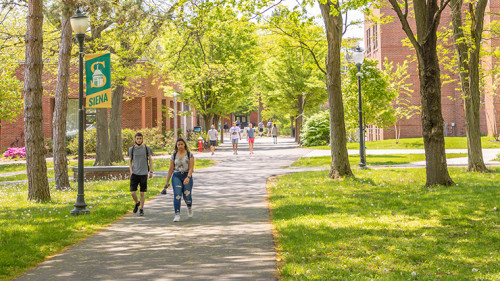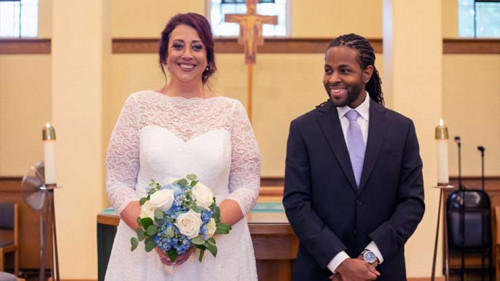

Stephen Pendergast ’18
For a full listing of the Frankenstein: Celebrating 200 Years of Fear and Thinking events, click here.
The clouds hung black above the French Alps who rose up to meet them like the molars of a massive maw. Four of the greatest literary minds of the generation, Percy Shelley, Mary Shelley, Lord Byron, and John Polidori gathered together, huddled by the warmth of firelight. Being of the disposition and influenced by the dark night, their topic turned to the occult, reading German ghost stories, and galvanism. As the conversation dipped, Lord Byron suggested they hold a competition to pass the time. “Who can tell the scariest story?” This utterance was the spark that led to nothing short of a literary revolution – the creation of the modern-day science fiction genre. Mary Shelley's masterpiece was born: Frankenstein; or The Modern Prometheus was published anonymously in London 1818.
Fast forwarding two hundred years, not only has Frankenstein endured countless re-imaginings, but it has continued to capture the minds of students around the globe. Siena College plans to honor it with a series of events under the theme Frankenstein: Celebrating 200 Years of Fear and Thinking. This series of events and lectures will be held primarily in the second semester, though the true start date is, fittingly, Halloween's Eve and Halloween itself with showings of Frankenstein, The Bride of Frankenstein and a guest lecturer, Professor Gianfranco Vidali of Cornell University’s astrophysics program.
As for the events on campus, they will largely be centered around issues that were not only prevalent 200 years ago, but are still. The major topics include:
-The role of STEM and the consequences of too much faith in the sciences or the infinite progress mentality of STEM
-How we treat those who are different from us
-The dangers of mob violence/mob mentality
-The importance of friendship
-The dangers of trying to circumvent the role of women in bringing about life
-The recognition of grief and our ways of responding to our own mortality
Why Frankenstein? Why now, and what does it have to do with Siena? Ray Boisvert, Ph.D., philosophy and first year seminar professor, was able to shed some light on these questions and the novel as a whole.
Boisvert explains that Frankenstein can be framed in two distinctly Franciscan images: the leper and the family. He noted that “one major theme of the novel is how damaging it can be when people are treated badly just because of what they look like. The other is how ordinary family life is something to be treasured.”
Rather than the trope of the mad scientist who creates something entirely out of his control – a theme depicted consistently in the movies, Boisvert argued that Shelley's masterpiece “highlights a more person-centered theme and that is what allows for some Siena-specific emphases.” The leper story shows St. Francis embracing someone disfigured with the disease. The Nativity scene highlights the importance of family. Both images are deeply related to the themes of Frankenstein as a whole.
St. Francis, who just recently turned to the Lord, was driven to reassess his values, and love. Compelled by the Spirit, St. Francis was overjoyed and filled with radical love for all living things. It was then he came upon a Leper. Instead of turning away, St. Francis dismounted his horse and embraced the Leper, kissing his hands and giving him a coin.
Unlike the Leper in St. Francis’s story, Frankenstein's Monster had no such radical acceptance from any such person – he was seen as somewhat the ultimate Leper, the ultimate always rejected, “other.” The Creature's drive for love and acceptance is the largest driving plot device in the novel, a theme that is significantly toned down in the movies which prefer the simpler “Mad Scientist” and “Uncontrollable Creation.” Boisvert expanded upon this by stating that Frankenstein's Monster “becomes malicious and dangerous only after no one, even his maker; is willing to embrace him as a worthwhile individual. The novel highlights this by including a scene with a blind man. He is the only one willing to listen to the creature and to judge him as a worthy individual.”
While, of course, Frankenstein is a well written tale of adventure, discover, mistakes, vengeance, misunderstandings, affection, acceptance, love, and loss. The tensions between family comfort and individual glory and the lack of acceptance of the other are themes that can be taken and dropped from time into the now.
Siena students, Boisvert suggested, can have a particular sensitivity to these two themes. Siena strives to create intelligent and educated leaders, yet also the idea of a Siena community is at our forefront. These are dichotomies, and striking that balance between community and individuality will always cause a tension.
Likewise, Shelley's novel takes new relevance in today's day and age. With distinct lines drawn and contrast portrayed so sharply, it is both a warning and a reminder of what forced otherness can do to individuals.
Two hundred years after its initial publication, Frankenstein continues to prove its relevance, to inspire, and unsettle. Uniquely suitable for Siena's culture, we are reminded time and time again of the tensions that Shelley herself brought.
It is the calling of Siena students to find the balance between the leadership roles they so often find themselves in all while fostering accepting and loving communities. It is, in some ways, a uniquely Siena problem that brings Saints to continue to study Frankenstein as they strive to honor both St. Francis's memory and legacy all while avoiding the mistakes of Victor Frankenstein himself.

